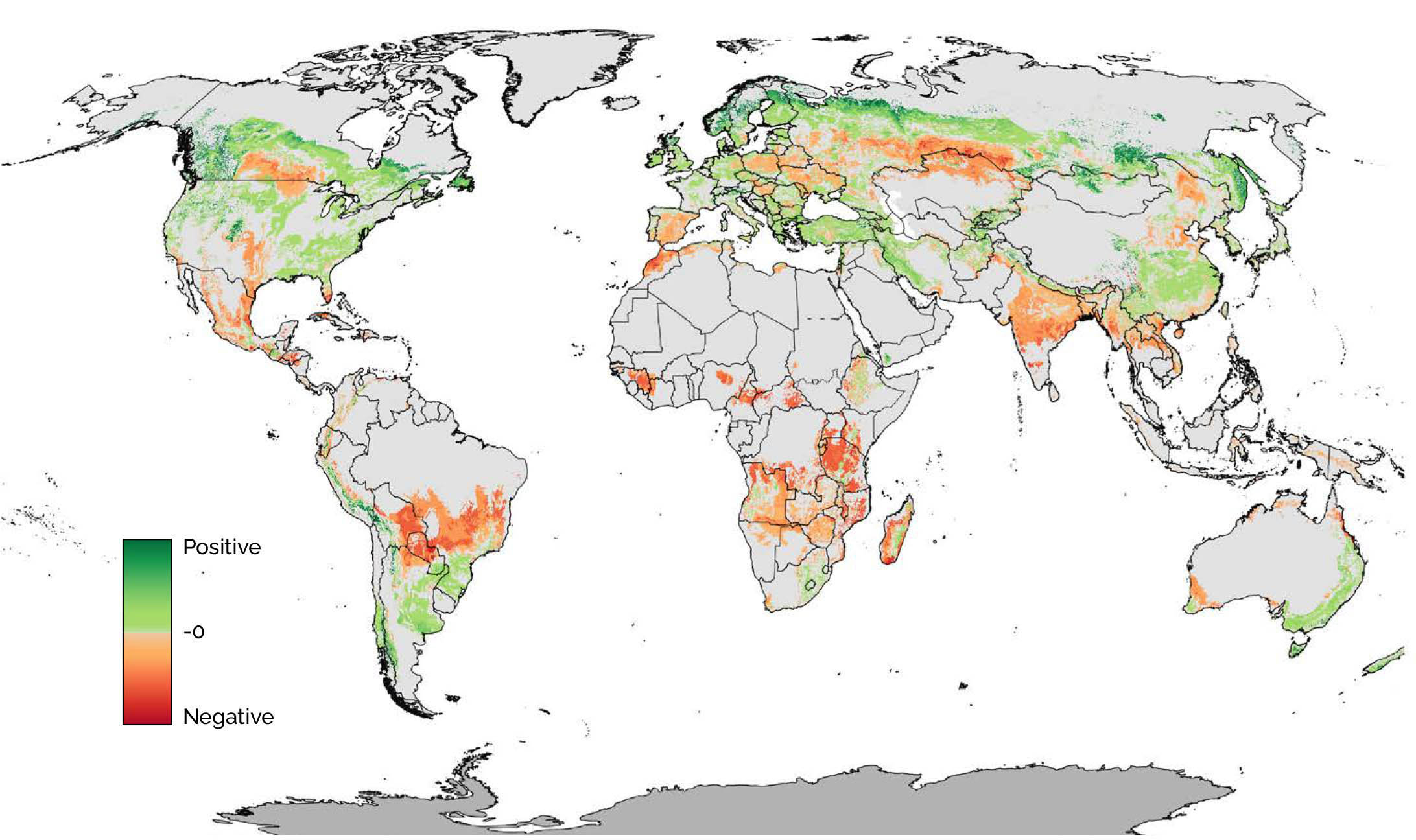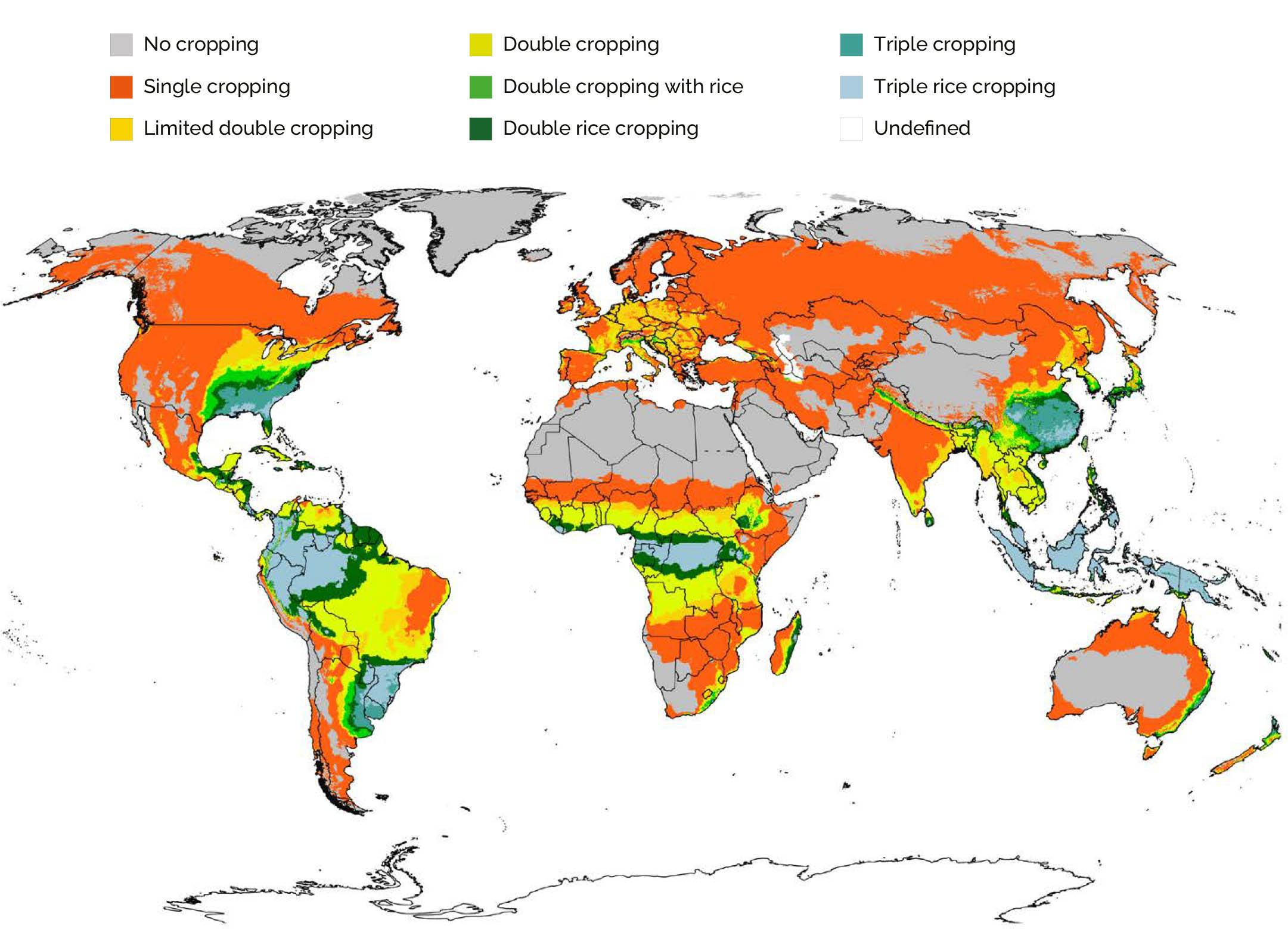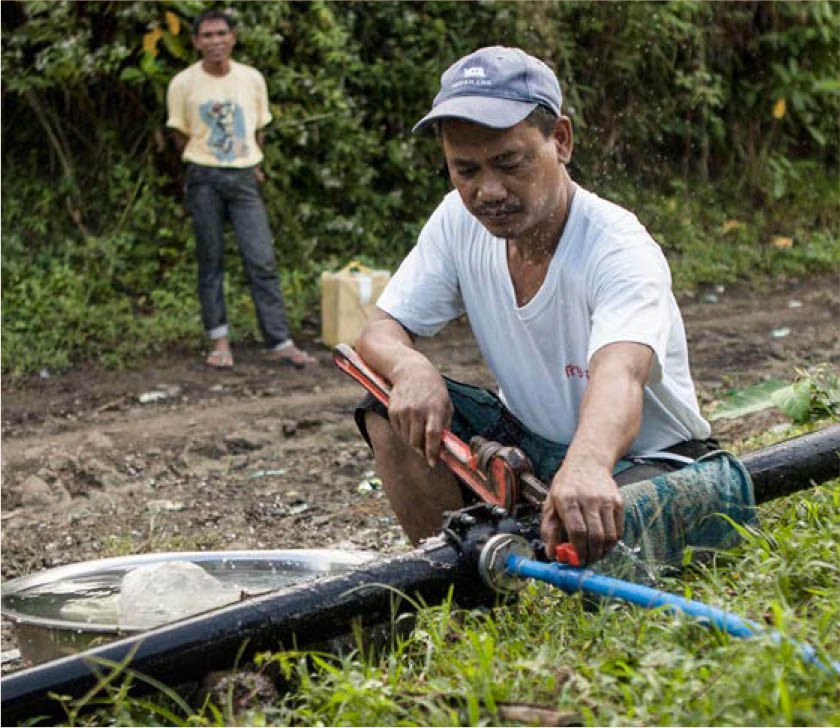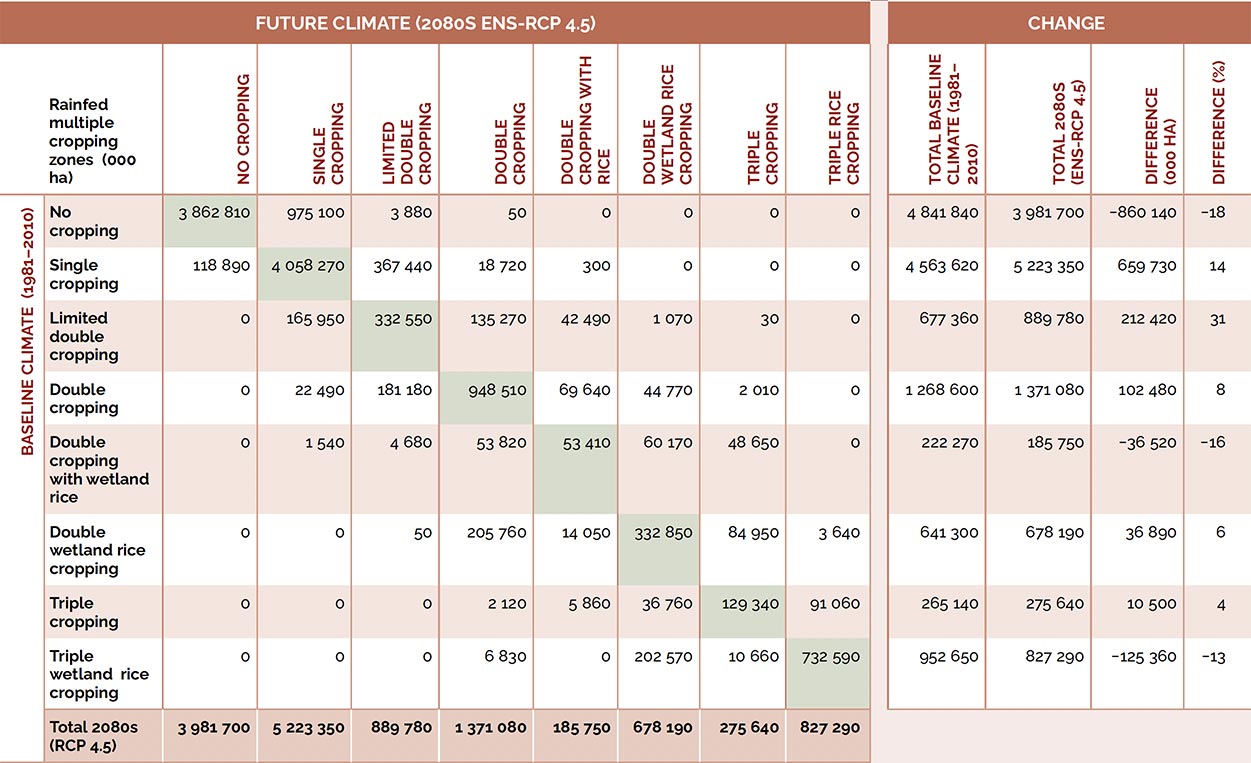3 Challenges Run Deep
3.3 From climate risk to rainfed production – shifting land suitability
Land suitability for cropping is not static; shifts in suitability and areas are anticipated as the climate changes. Using land resources planning tools, such as the GAEZ methodology, together with climate models, provides invaluable insights into how these changes will redistribute land available for production for different crops and livestock and identify potential impacts on productivity and yield gaps.
Map S.14 illustrates shifts in land areas suitable for rainfed wheat for a high-emission/high-temperature scenario to the 2080s (RCP 8.5), leading to a 4.2 °C temperature increase. Wheat production would increase in Argentina, Australia, Canada, Chile and Northern Eurasia, and decline in most of Central Africa and parts of Brazil, Central Asia and India. Other crop results are mixed, with some predicted to increase and others to reduce potential cropped areas.

Map S.15 illustrates a shift in opportunities for multiple cropping zones projected into the 2080s, showing the effects of climate change. Supplementary irrigation could also extend the growing season and add value. However, introducing irrigation brings another set of problems, such as access to equipment and water, cost and the required skills to practice efficient irrigation practices.


Table S.7 lists the absolute and percentage changes in rainfed multiple cropping potential between baseline climate (1981–2010) and the 2080s (ENS-RCP 4.5).

Source: Tuan et al., forthcoming, based on GAEZ v4 data.
Climate change will bring problems for many, and benefits for some. In some regions, such as Central Africa and Eastern Europe, land areas suitable for cropping will decrease, requiring changes in cropping, livestock and land and water management practices better suited to the new growing conditions. The tropics and subtropics are expected to benefit from multiple cropping. Globally, seed and germplasm exchange among ecoregions and increasing investment in crop breeding for tolerant traits will be crucial to develop crops and varieties that can withstand future changes in temperature, salinity, wind and evaporation.

